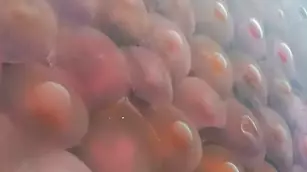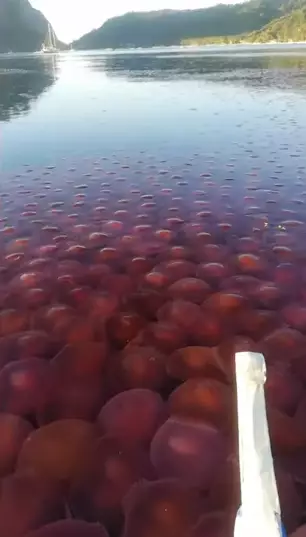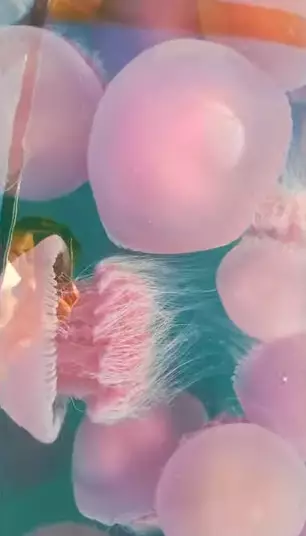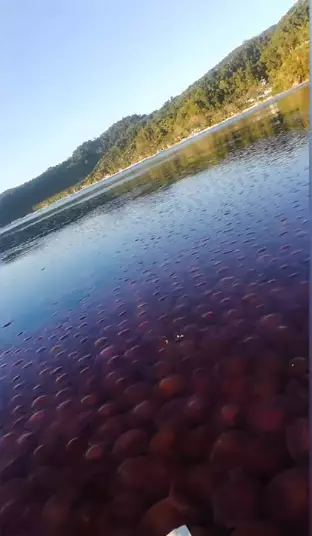
Thousands of pink jellyfish have been spotted in a bloom off a beach in the Philippines usually bustling with tourists.
The beaches in Palawan are ordinarily a massive tourist hotspot, but - as is the case with most places - the coronavirus pandemic has left them completely free of humans for a while now.
Advert
Jellyfish in these numbers haven't been spotted here for ages, but now they have returned to the coastline and risen to the surface.

The strange amorphous creatures are known as tomato jellyfish and some scientists think they have ventured back up to the top of the water as a result of the lack of human activity - although here is some disagreement on this.
Incredible footage shows the sheer number of the invertebrate creatures in the water and was filmed by 27-year-old Alimar Amor on 23 March.
Advert
He said: "I was amazed by thousands of jellyfish."

Yep, that seems like a fair response.
Speaking about the same video, Sheldon Rey Boco - a PhD student in marine biology at Australia's Griffith University - tweeted: "Jellyfish certainly are not affected by #COVID19 restrictions.
Advert
"These hundreds or thousands of medusae are probably present in late January or February but because of wind, current and tidal conditions, they only seem to appear during March in Palawan.
"The atmosphere, water velocity, current, tide and even geological features of the bay or any body of water can influence the occurrence of medusae and their blooms."

Speaking to Newsweek, he added: "On days when it is business-as-usual, the Corong-corong Bay in El Nido is heavily used by tourists for recreational fishing and boating and by local fishers for catching fish and invertebrates.
Advert
"These activities can possibly alter water circulation and distribution of zooplankton food for the jellyfish, thereby potentially changing the distribution of jellyfish medusae.
"The absence of field data and formal scientific reports on the behavior and distribution of the jellyfish species makes it difficult to even speculate about whether the presence of tourists and fishers on the area affect the jellyfish."
Dr Ryan Baring, a lecturer in marine biology at Flinders University in Australia, told the same publication: "It might just be [...] that the current bloom is more noticeable because the tourists aren't there to disturb the jellies and so they are rising all the way to the surface of the water and in the presence of tourists they may stay closer to the bottom of the sea, or move further offshore."
Featured Image Credit: StorytrenderTopics: World News, Weird, Animals